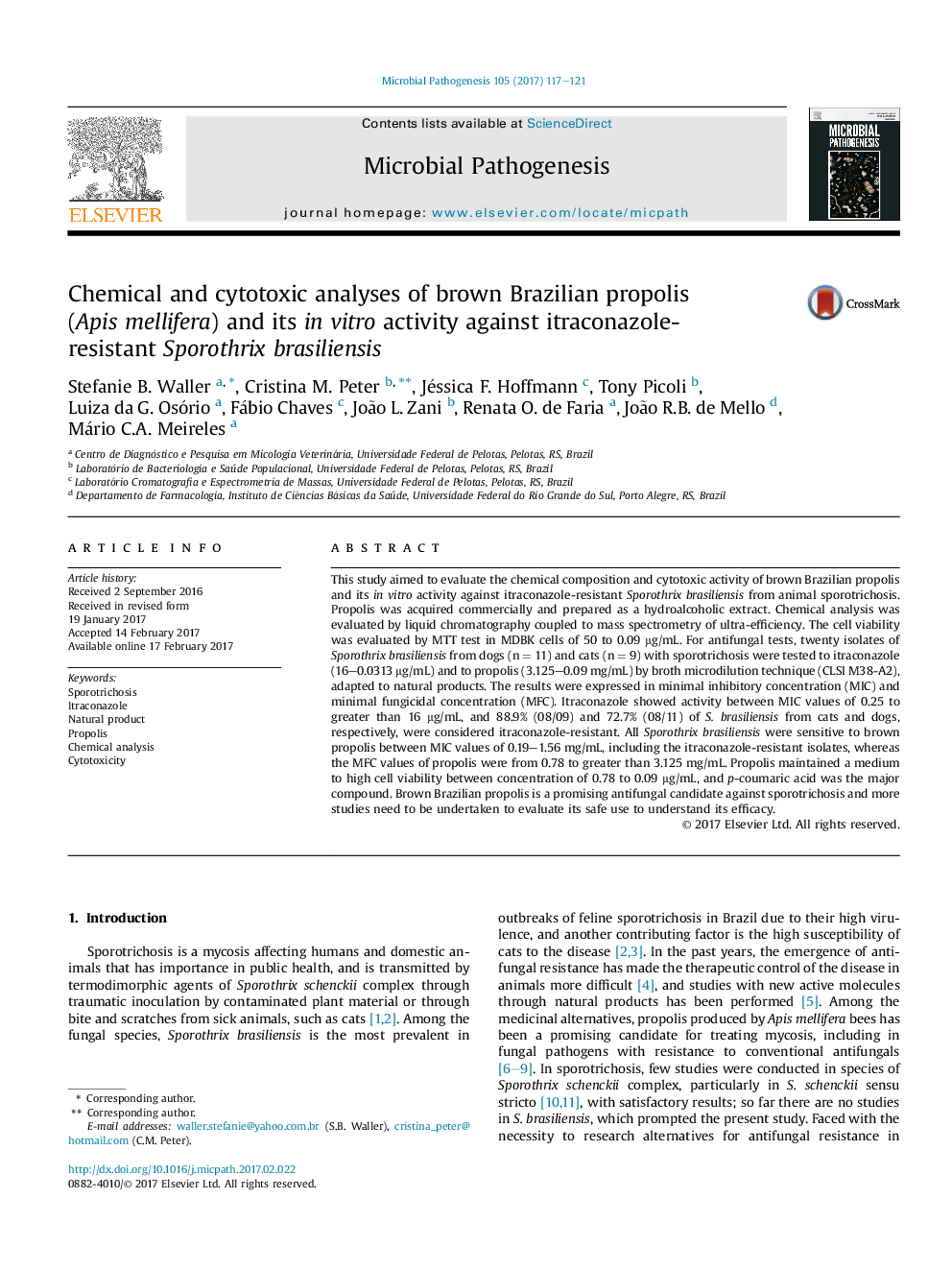| Article ID | Journal | Published Year | Pages | File Type |
|---|---|---|---|---|
| 5673814 | Microbial Pathogenesis | 2017 | 5 Pages |
â¢Itraconazole-resistant isolates of S. brasiliensis were sensitive to propolis.â¢Total phenolic and flavonoids contents and p-coumaric acid was major.â¢High cell viability on MDBK line.â¢Brown Brazilian propolis is an antifungal candidate for the treatment of sporotrichosis.
This study aimed to evaluate the chemical composition and cytotoxic activity of brown Brazilian propolis and its in vitro activity against itraconazole-resistant Sporothrix brasiliensis from animal sporotrichosis. Propolis was acquired commercially and prepared as a hydroalcoholic extract. Chemical analysis was evaluated by liquid chromatography coupled to mass spectrometry of ultra-efficiency. The cell viability was evaluated by MTT test in MDBK cells of 50 to 0.09 μg/mL. For antifungal tests, twenty isolates of Sporothrix brasiliensis from dogs (n = 11) and cats (n = 9) with sporotrichosis were tested to itraconazole (16-0.0313 μg/mL) and to propolis (3.125-0.09 mg/mL) by broth microdilution technique (CLSI M38-A2), adapted to natural products. The results were expressed in minimal inhibitory concentration (MIC) and minimal fungicidal concentration (MFC). Itraconazole showed activity between MIC values of 0.25 to greater than 16 μg/mL, and 88.9% (08/09) and 72.7% (08/11) of S. brasiliensis from cats and dogs, respectively, were considered itraconazole-resistant. All Sporothrix brasiliensis were sensitive to brown propolis between MIC values of 0.19-1.56 mg/mL, including the itraconazole-resistant isolates, whereas the MFC values of propolis were from 0.78 to greater than 3.125 mg/mL. Propolis maintained a medium to high cell viability between concentration of 0.78 to 0.09 μg/mL, and p-coumaric acid was the major compound. Brown Brazilian propolis is a promising antifungal candidate against sporotrichosis and more studies need to be undertaken to evaluate its safe use to understand its efficacy.
Graphical abstractDownload high-res image (138KB)Download full-size image
